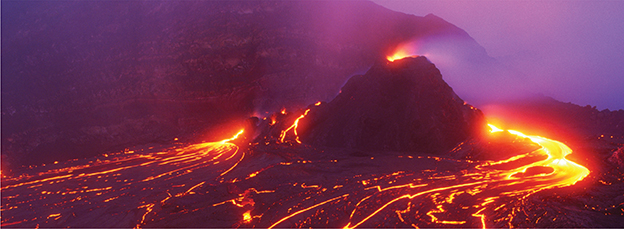Figure 40 Lava may flow in the form of rough chunks called aa, or smooth coils called pahoehoe. Formulating Hypotheses Develop a hypothesis to account for the difference in texture between pahoehoe and aa.

Quiet and Explosive Eruptions
A volcanic eruption like that of Mount St. Helens has the force of a powerful explosion. But in other volcanic eruptions, lava flows gently over the surface.  Volcanoes erupt explosively or quietly, depending on the characteristics of the magma.
Volcanoes erupt explosively or quietly, depending on the characteristics of the magma.
Magma can vary in viscosity, the resistance to flow. Magma with high viscosity is thick and resists flowing. Magma with low viscosity is thin and flows easily.
There are three main factors that determine the viscosity of magma: temperature, water content, and silica content. Higher temperatures lower the viscosity of magma, so it flows more easily. The presence of water in magma also helps it flow more easily. Magma that is high in silica has high viscosity. The silicon and oxygen atoms in silica are held together with strong bonds. The silica in magma acts like glue, preventing the magma from flowing easily.
Quiet Eruptions
Volcanoes that have very hot, low-silica magma generally erupt quietly. In a quiet eruption, lava erupts in a stream of low-viscosity lava, called a lava flow. Lava flows from a quiet eruption can travel for great distances. Quiet eruptions produce two different kinds of lava, as shown in Figure 40. Hot, fast-moving lava with a ropelike surface is called pahoehoe (pah HOH ee hoh ee). Cooler, slow-moving lava with a chunky, crumbly appearance is called aa (AH ah).
Explosive Eruptions
High-silica magma produces explosive eruptions. Thick magma can clog a volcanic pipe, causing enormous pressure to build up. Trapped steam inside the volcano adds to the pressure, as was the case in the eruption of Mount St. Helens. When the volcano finally explodes, lava and hot gases are hurled outward. The lava solidifies very quickly and shatters into pieces of different sizes. These particles range in size from fine dust and ash, to pebble-sized cinders, to bombs—chunks of lava that can be the size of a small car.
Figure 41 Mt. Kilauea in Hawaii erupts quietly, producing low-viscosity lava flows.





